References to “new” or “old” wood are common when it comes to pruning.
And understanding which is which is key, because pruning the wrong type can ruin that or the next year’s flower show or fruit harvest.
This is because some trees and shrubs fruit or flower on new wood, and some on old.
If you prune at the wrong time, you cut off the parts that are forming that will produce the blossoms.
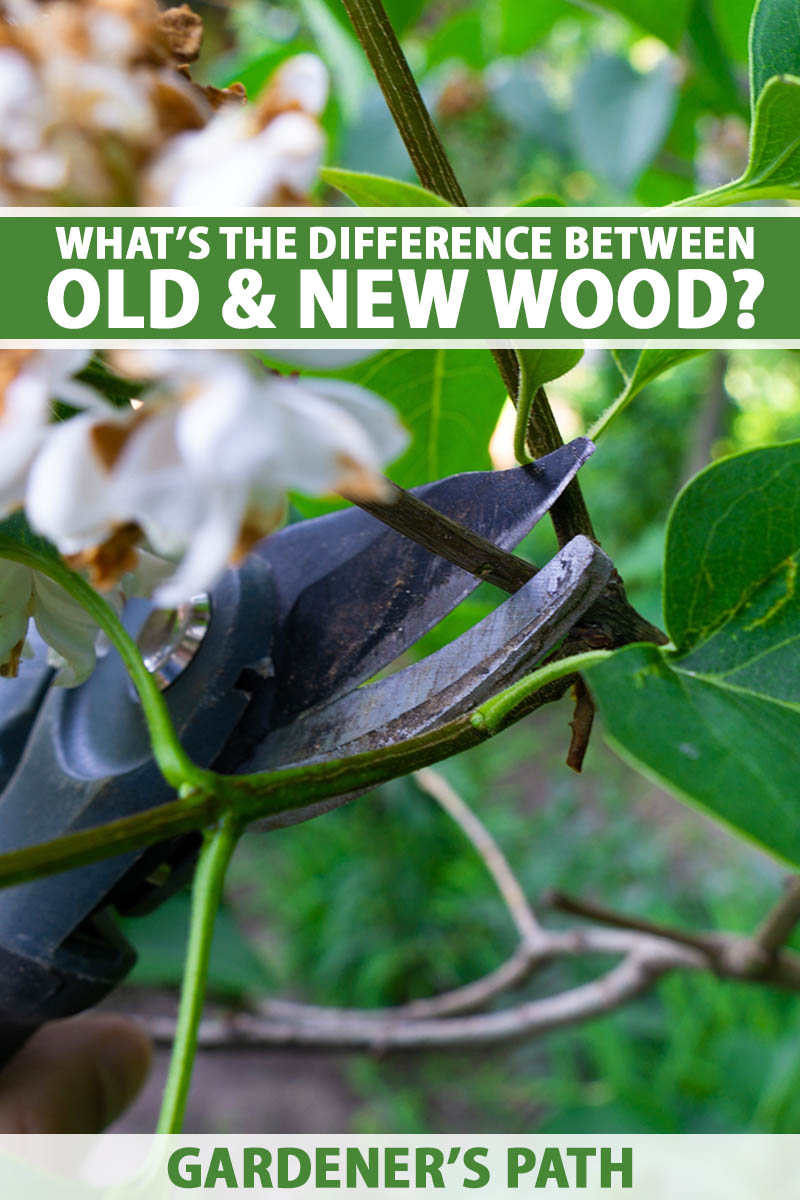
We link to vendors to help you find relevant products. If you buy from one of our links, we may earn a commission.
Of course, when a tree is damaged or sick, timing doesn’t matter. Just cut that bad stuff off, no matter how old it is. Otherwise, timing is everything.
The first step is figuring out which type you have. Next, you have to determine what the new and old growth looks like so you know what to trim.
Sometimes the newer stuff is easy to distinguish, and the older growth is as plain as day.
Other times, it’s a bit more challenging. Let’s prune through the details to figure it all out. Here’s what we’ll go over to do that:
How to Prune Old vs. New Wood
All perennials will have both old and new growth, and proper pruning relies on knowing the difference.
Most species fall firmly into one or the other category. However, some plants defy categorization.
Hydrangeas, spirea, and roses need to be addressed on a case-by-case basis, but you can make some broad generalizations.
Summer spirea blooms on current growth, while bigleaf hydrangea produces flowers on the previous year’s parts.
But some modern hydrangeas bloom on both, and the same goes for clematis.
Before we jump in, familiarize yourself with the basics of pruning if you aren’t already familiar with the general process.
Old-Type Species
“Old wood” is kind of a misnomer.
It’s all relative, but to us, older stuff may actually seem quite new because it might only be a few months old.
All that matters here is whether it emerged before or after this year’s dormancy period.
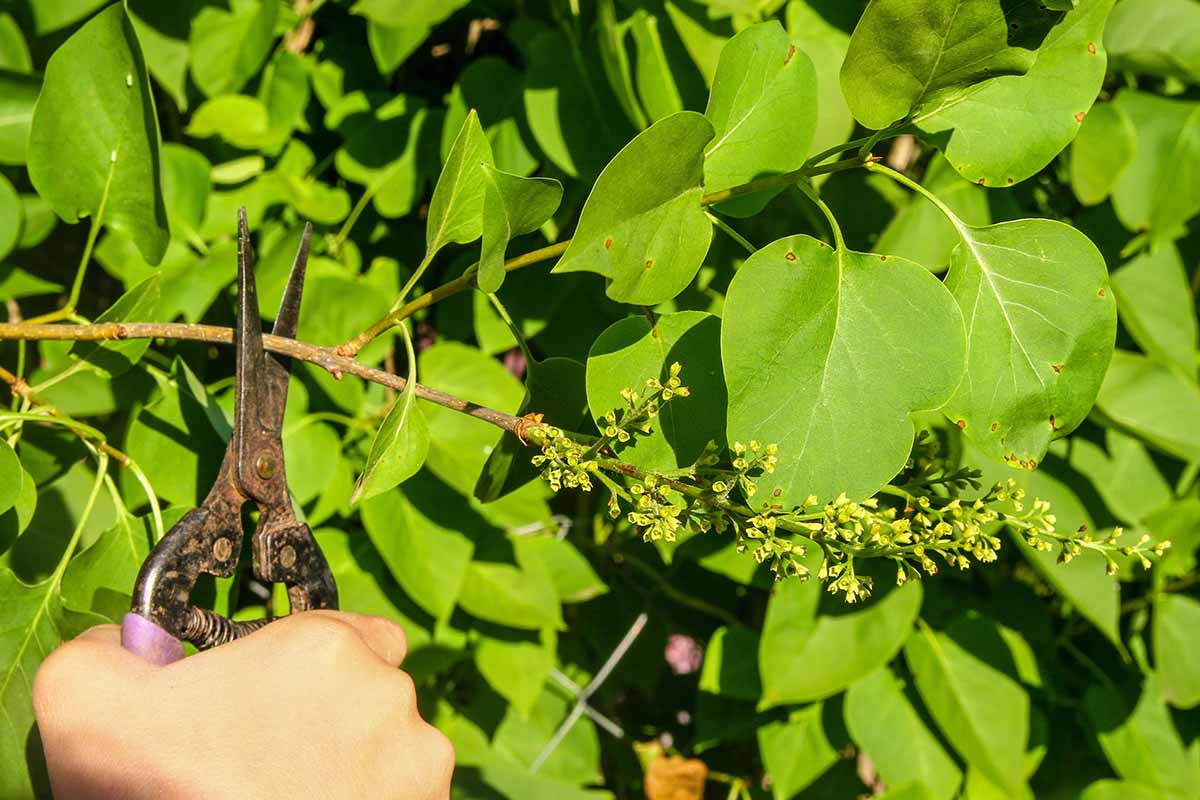
Old wood is that which grew and developed in the previous year.
Anything that was in place before the dormant season arrived would be considered “old” in the following growing season, even if it has only been around for one year.
This is also known as last year’s growth.
Many spring-blooming species are old wood types:
- Azalea (Rhododendron spp.)
- Chokeberry (Aronia spp.)
- Cotoneaster (Cotoneaster spp.)
- Daphne (Daphne spp.)
- Flowering almond (Prunus glandulosa)
- Flowering quince (Chaenomeles spp.)
- Forsythia (Forsythia spp.)
- Lilac (Syringa spp.)
- Mock orange (Philadelphus spp.)
- Ninebark (Physocarpus spp.)
- Rhododendron (Rhododendron spp.)
- Stone fruits (most of them)
- Viburnum (Viburnum spp.)
- Weigela (Weigela spp.)
- Witch hazel (Hamamelis spp.)
Old wood should be pruned right after the plant finishes flowering. That way, you don’t risk disturbing the developing growth that will produce the flowers and fruit next year.
If you don’t get around to pruning within a month or two, hold off if you can, or you risk cutting off the developing growth that will produce the show in the following year.
New-Type Species
New wood is the growth that develops in the current year after the tree or shrub emerges from dormancy.
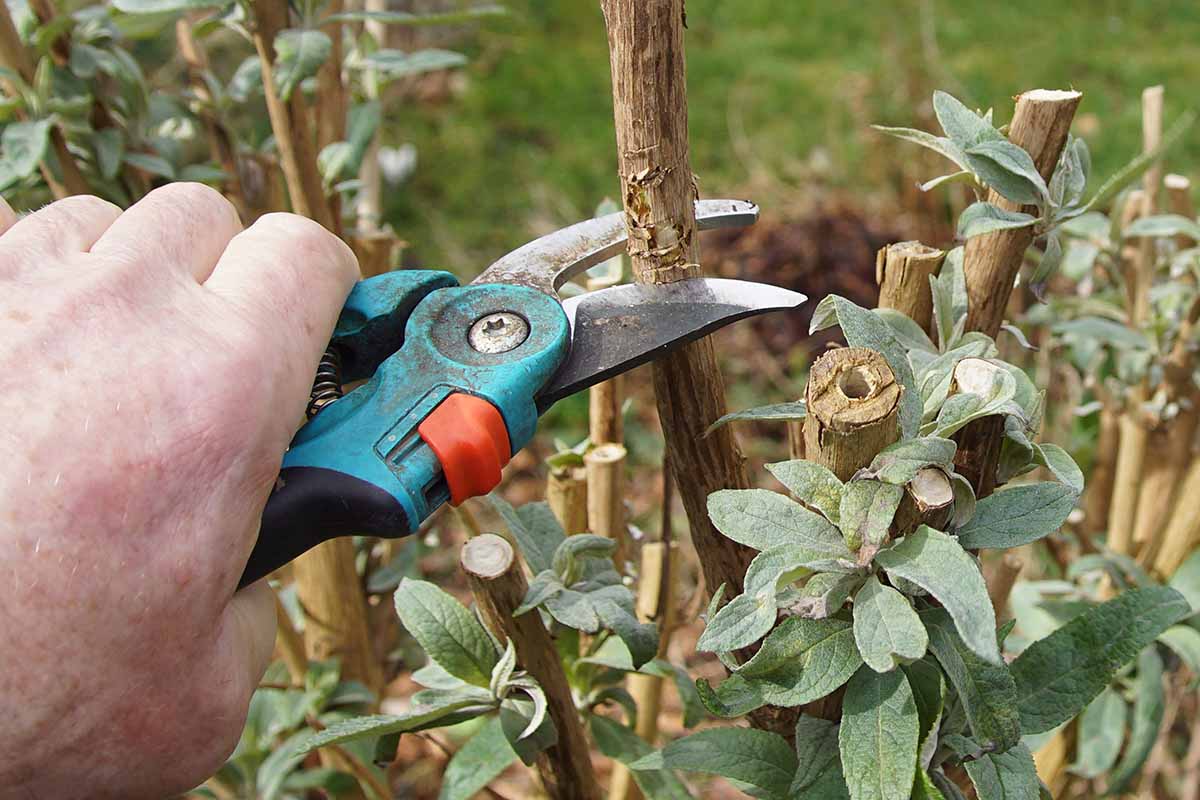
This is also known as current-year growth. Most summer- or fall-blooming species are of this type, including:
- Barberry (Berberis spp.)
- Butterfly bush (Buddleja spp.)
- Crepe myrtle (Lagerstroemia spp.)
- Figs (Ficus spp.)
New wood should be pruned in late winter before the new growth begins. Often, you can get away with an early spring trim, but only if it takes place before the buds start to open.
If you wait until the buds have opened and start growing, you’re removing the growth that will produce the fruit or flowers later that year.
How to Tell the Difference
Unless you mark the growth in some way, you’re going to have to try and figure out which is which before you prune.
With some plants, it’s totally obvious.
Old bark is typically darker and harder, though this isn’t true for every species. Some plants start out with red or green bark, some have pale bark, and others start out with dark bark that fades as it ages.
Older stuff is thicker, of course, because it has had a longer time to grow than younger stuff.
Old wood is stiffer and won’t bend as easily, and again, this is because it has had longer to mature. Often, old wood is rougher in appearance than younger wood as well.

Young bark is often smooth and thinner.
Don’t automatically conflate new buds with new wood! Buds might emerge on older stuff.
If you truly can’t tell the difference, you’ll need to do a little detective work.
The only surefire way to tell new from older growth is to observe your plant. In the spring, note one section of new growth as it emerges in the spring and as it grows over the year.
Compare it in the fall to a section of the plant that was there already in the spring.
You might want to mark these with a colorful twist tie or piece of twine.
Going forward, you’ll easily be able to tell the difference.
Is Hard or Soft the Same as Old or New Wood?
Some people conflate the terms “old” and “new” with “hard” and “soft.” But this can lead to confusion.
You might assume we divide hardwoods and softwoods based on how hard the wood is, right? I mean, that would make sense.
In reality, softwoods are gymnosperms. These are seed-producing trees with “naked seeds,” which is what the term “gymnosperm” means in Greek. These trees have cones and other structures that leave the seeds exposed.
Broadly, softwood trees are the conifers, ginkgo trees, and cycads. Typically, the trees in this category are evergreen. So we’re talking about pines, cypress trees, cedars, and sago palms, for example.
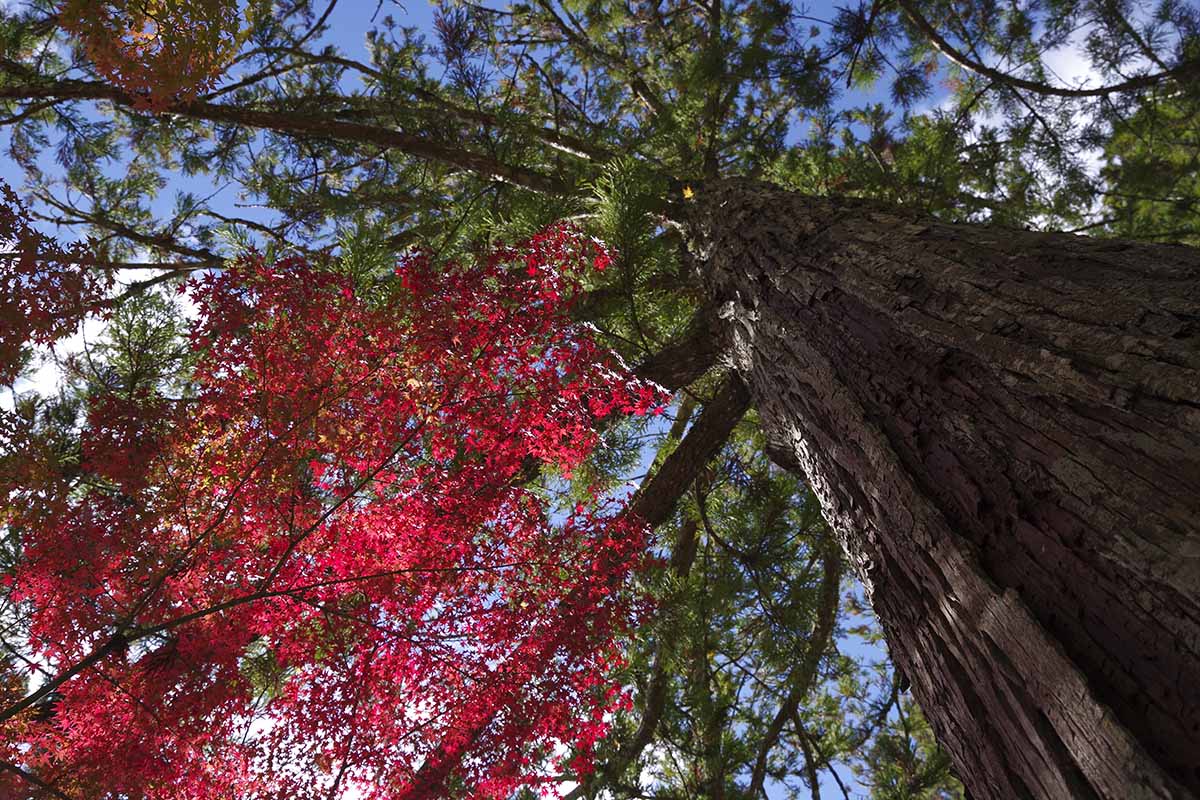
Hardwoods, on the other hand, are plants that produce flowers and fruits.
These plants are usually deciduous (though there are exceptions) and they have broad leaves.
Maples, oaks, elms, willows, birches, hickories and other types of nut trees, fruit trees, locust trees, and ashes all fall into this category.
New and old has nothing to do with the type of wood in this context. A hardwood tree has both old and new growth, as does a softwood.
Everything Old Is New Again
Pruning at the right time and making your cuts on the right type of wood means the difference between enjoying your fruits and flowers that year, or going without.
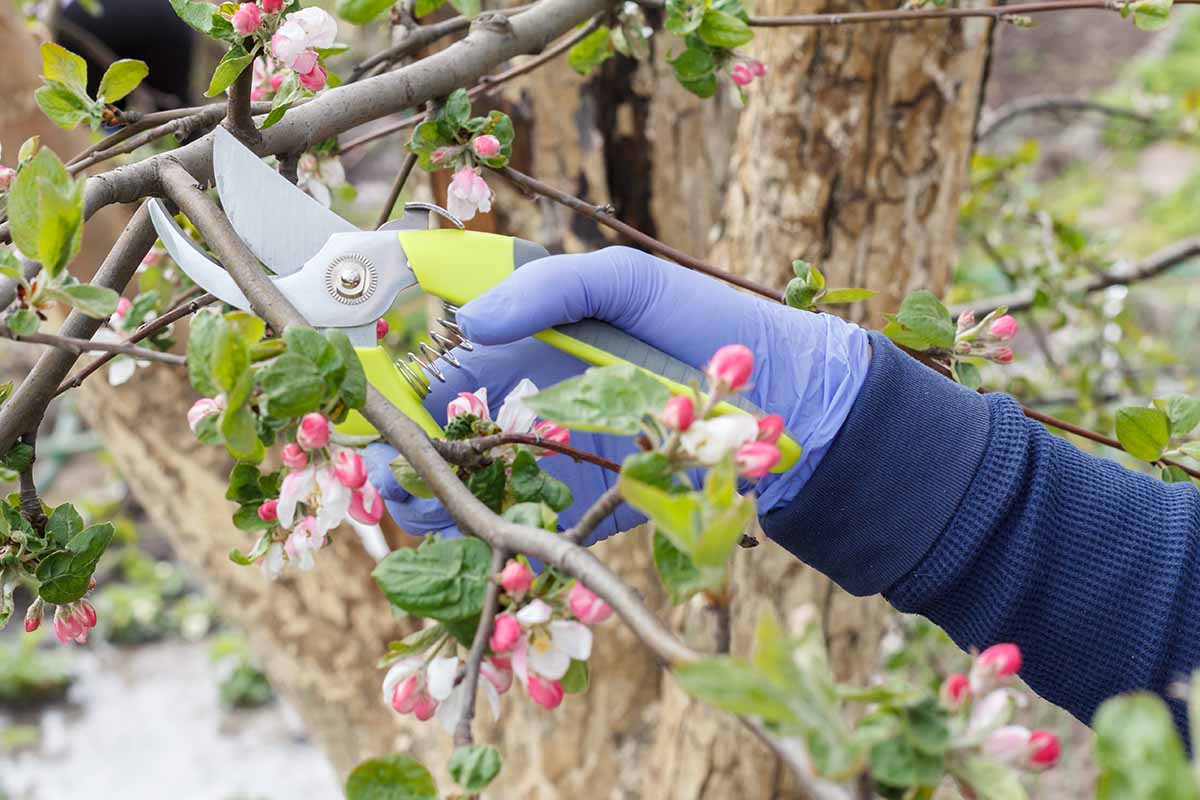
Don’t panic, gardening is all about trial and error.
If you mess up one year, it’s not the end of the world, and you’ll know what to do differently the following year. But these general guidelines should set you on the right path.
What kind of perennial plant are you pruning? Let us know about your garden in the comments.
If you’re interested in some more detailed advice on pruning and maintenance, you might find the following guides useful:
So if my elderberry do not fruit on first year wood what would be my pruning regimen? I have been cutting them to about 4 or 5 ft high.
Hi Edward, it might not be your pruning regime that is causing the lack of fruit. We have a whole guide dedicated to the process, so you might want to give that a read to make sure you’re doing it right. You really have a lot of leeway with these plants. You can cut them way back and they’ll bounce right back, or you can go in and strategically cut out the wood that is three years or older. If you’re pruning right and it still isn’t blooming and flowering, I would test the soil and monitor the sun during… Read more »